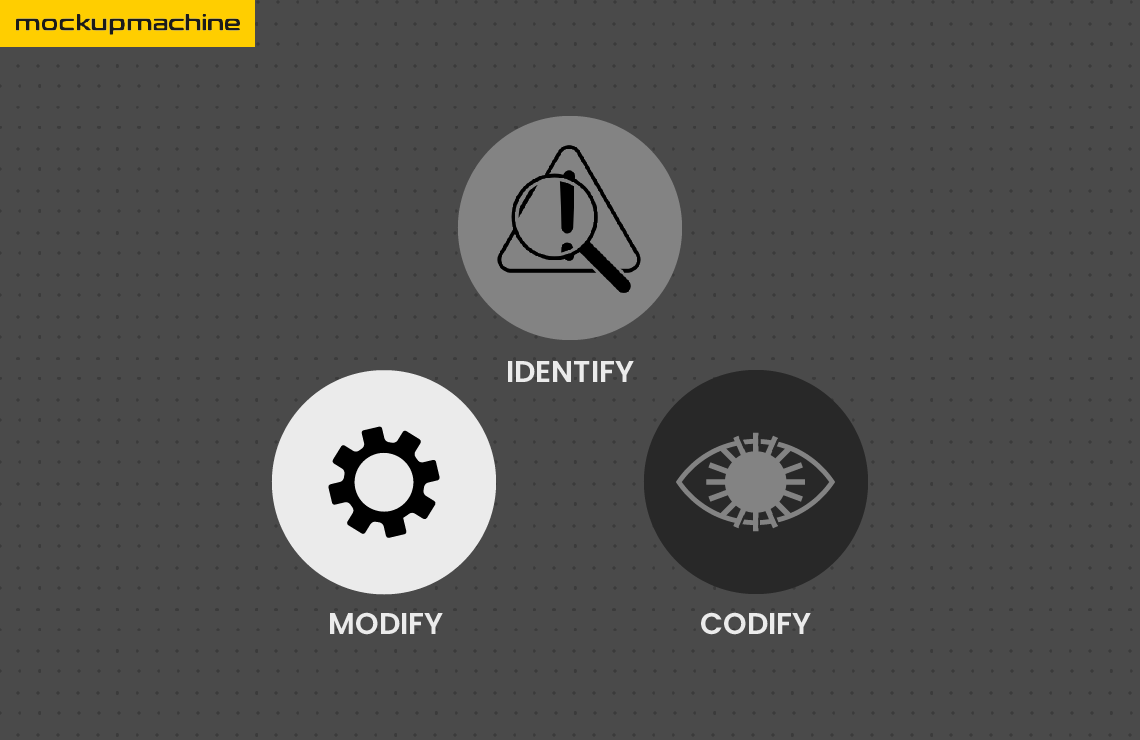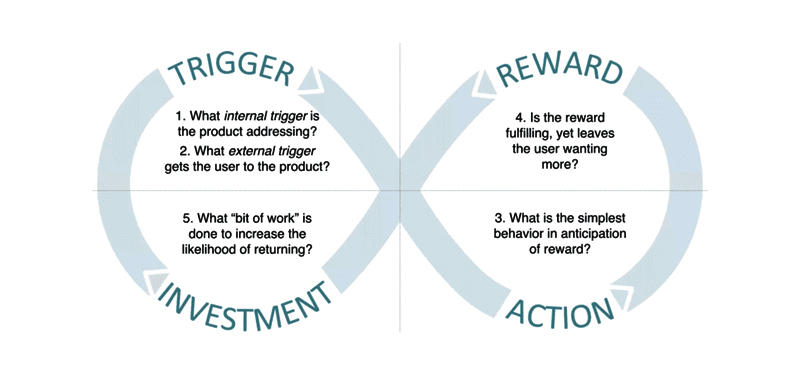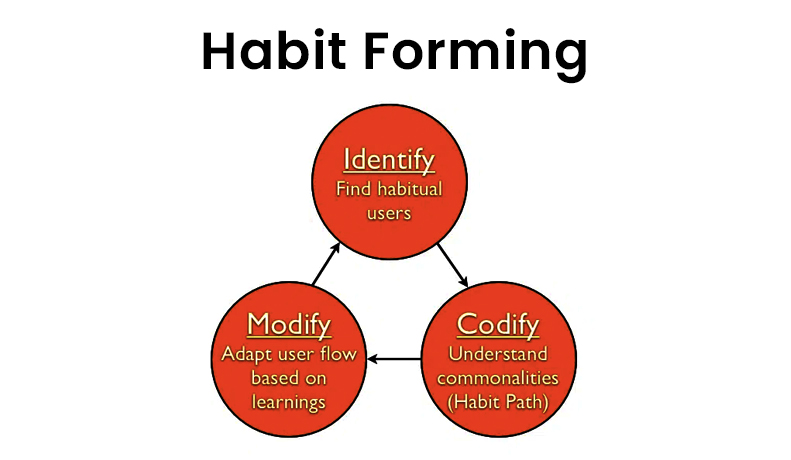
An Introduction to Habit-forming Products
Wake up, pick up your phone, check notifications, open a social app while lying in bed and start scrolling.
Do you want your customers to visit your app habitually?
Many renowned companies like Facebook, Instagram, Google, Twitter, LinkedIn, and Pinterest create habit-forming products for users. Everyone scrolls these apps frequently, and no one imagines their existence without it due to its Habit-forming UX design.
There are tools to design and measure user habits, but professionals rely on the hook model for habit-forming products. Below is a brief explanation of the hook model to understand the Habit-forming UX Design.
Basic Understanding of The Hook Model
The hook model is helpful for companies to hook their users and form a habit of using their products, applications, or services more frequently. Following are the four parts of the hook model for different companies:
- Trigger
- Action
- Reward
- Investment

1- Trigger
The trigger is one of the best ways to maintain user consistency. Habit-forming products developers alert their users by an external trigger that deals with sending them a link, email, or icon on a continual basis. An internal trigger is a habit that your users form through an external trigger i.e by visiting your app on a day-to-day basis.
2- Action
The action occurs when a user performs an activity on your application. For example, while using Facebook, users click on an image and open it instantly. That instant action is a reward for an owner by the user.
3- Reward
A reward excites the user to opt for your application. The owner has to provide multiple awards for users to attain a constant user interest. For example, while watching videos on Facebook that are of your interest, it suggests other things that might catch his eye.
4- Investment
In this stage, the user has to provide some input to improve the value of your application. A user can invest in different types like data, time, effort, social, capital, or money for your product. It does not demand credit cards or debit cards but sharing profiles among friend circles or giving productive feedback is also a liable investment.
The steps mentioned above of the hook model are essential to introduce a habit testing product for your users.
Let’s explore the process of habit-forming products
The Process of Creating Habit-forming Products
The habit-forming application demands a site or an app to work on, how users frequently scroll it, track their usage path, and review the data.
It follows the three primary steps that are as follows:
- Identify
- Codify
- Modify

Let’s explore these in-depth!
1- Identify
In this phase, you have to explore habitual users and jot down their app usage with their complete details. Following are the few ways through which you can identify your daily users.
- Evaluate your app
Users visit an application or website according to different niches. If you are planning an application like Facebook or Instagram, then it is a fact that users scroll it after minutes because it shows interesting content. But if you are operating a food delivery app or weather forecast app, the user will visit according to their needs.
- Make your application bug free
It is evident to present your application or website without having any bugs or technical errors. A user is always expecting a good representation of your platform thus, presenting it without any ambiguities.
Evaluate your product in comparison to other applications and make it user-friendly for your users so they use it habitually. Call your routine users who frequently interact with your products as devotees.
2- Codify
Codify is the process that involves user research to codify different steps according to the app usage of the devotees. Evaluate what has hooked them and code the whole app in a similar pattern. According to research, an app has 5% of devotees who use your app frequently.
If you don’t have 5% of the devotees, try to explore the loopholes in your app because a minimum range of 5% permanent users allows you to follow the same pattern for your clients to make it more reliable.
What is the method to explore a habit path?
For habit-forming products, you need to research different usage patterns of your app as every person has a different fingerprint with a distinctive way of using your app. Evaluate different usage patterns and start making a Habit-forming UX design.
What are the main steps required in the habit path?
Below are the few common steps that are essential in the habit path for clients.
- Create a hypothesis
Evaluate the user path and jot down a single way where commoners become your permanent users.
- Consult your users
Grasp the few primary pointers while evaluating your user patterns, make sure why they are using your app or how they should use it?
3- Modify
After having a hypothesis, it’s time to modify or build habit-forming products. Test your app and make it user-friendly or manage to provide a Habit-forming UX design for users. Research on your competitors and make your user design distinctive with all the competitive options.
Conclusion
Habit-forming UX design is not a constant process. It modifies with the change in devotees or updates in the market to lead professional designers to modify it and maintain the devotee rate.
If you are interested in having a Habit-forming product to enhance the number of devotees, consult us now and make yourself carefree. mockup machine is a competitive UX design platform with a team of professional UX designers and business analysts.
